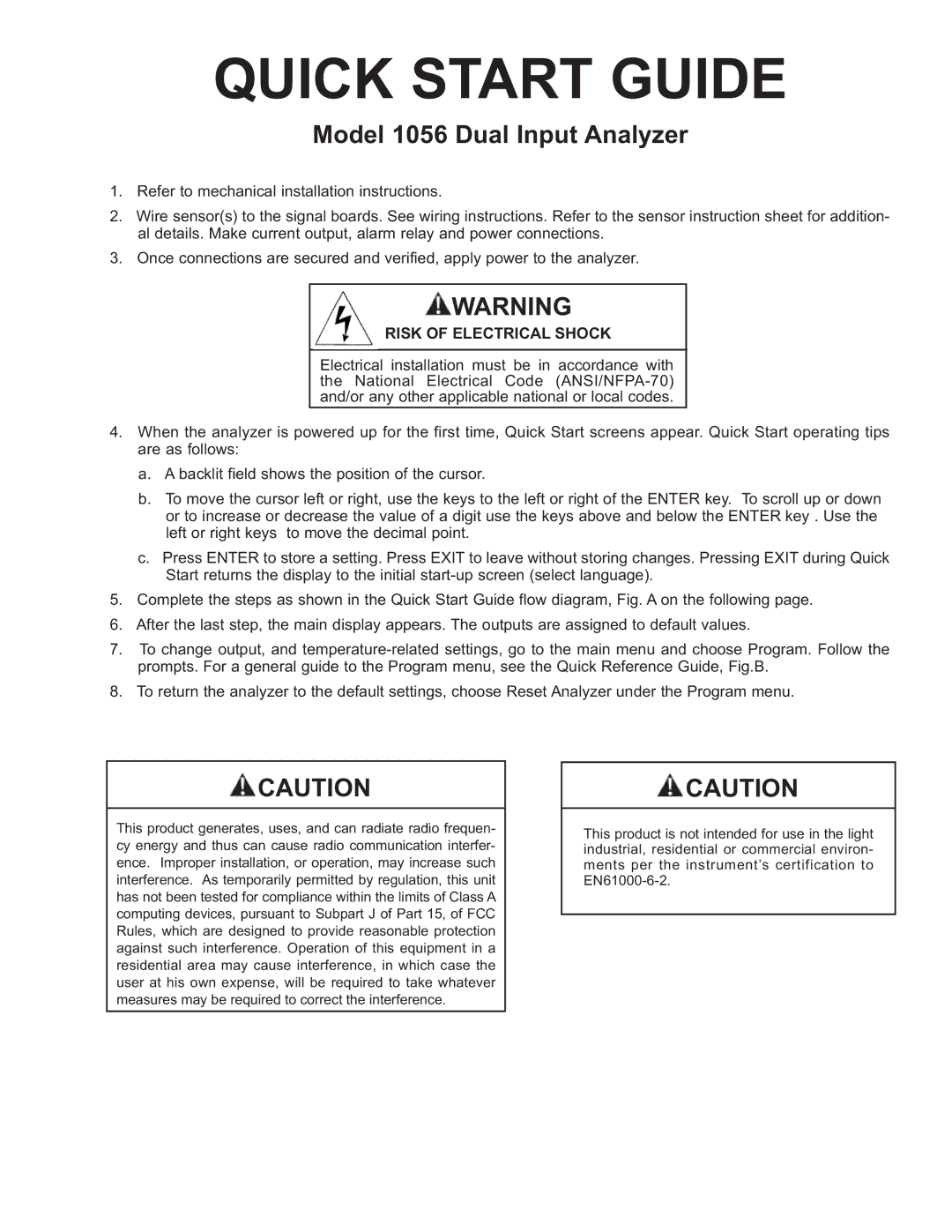1056 specifications
Emerson Process Management's 1056 is a high-performance flue gas analyzer designed for industrial applications requiring precise measurement of combustion and emissions. This advanced analyzer is instrumental in optimizing combustion processes, ensuring regulatory compliance, and enhancing overall operational efficiency.One of the key features of the Emerson 1056 is its multi-gas measurement capability. The device can simultaneously monitor multiple gases, such as oxygen, carbon dioxide, carbon monoxide, and nitric oxides. This comprehensive measurement range provides operators with critical insights necessary for managing combustion processes effectively.
The 1056 utilizes advanced infrared and electrochemical sensing technologies. The infrared sensors are particularly effective for measuring gases like CO₂ and CO, while electrochemical cells handle specific gases like O₂ and NOx. These technologies offer high accuracy and reliability across a wide temperature and pressure range, ensuring that the data collected is both timely and precise.
Another significant characteristic of the Emerson 1056 is its robust construction, which is designed to withstand harsh industrial environments. The analyzer features durable materials that resist corrosion and high temperatures, ensuring long-lasting performance. Additionally, the 1056 is equipped with a user-friendly interface that simplifies operation and data interaction. Its intuitive design allows users to access real-time data and easily configure settings, facilitating quick decision-making on the shop floor.
For communication and integration with existing systems, the 1056 supports various industry-standard protocols, such as HART, Modbus, and Ethernet/IP. This compatibility enables seamless integration into broader control and monitoring systems, allowing for enhanced data sharing and management.
Emerson has also placed a strong emphasis on serviceability with the 1056. The analyzer is designed for easy maintenance, with features that simplify calibration and routine checks. This reduces downtime and operational disruptions, ensuring continuous compliance with environmental regulations.
In conclusion, the Emerson Process Management 1056 stands out as a versatile and reliable flue gas analyzer, offering advanced measurement capabilities, robust construction, and seamless integration into industrial systems. Its combination of technology and user-centric design makes it an essential tool for industries striving for efficiency and compliance in their combustion processes.

